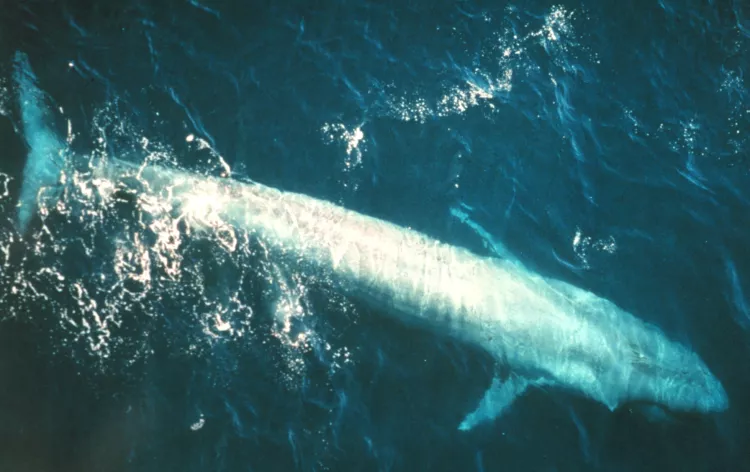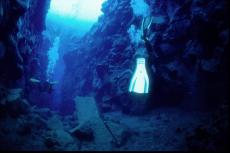Blue whales' meal planning is complicated
Blue whales are not indiscriminate grazers but instead switch foraging strategies in response to variation in prey density and depth to maximize energetic efficiency.
Feeding performance of blue whales vary wide as a function of prey density and distribution, according to new research just published in Science Advances. Because rorqual whales are air-breathing divers that exhibit a high-cost feeding mechanism, they are under considerable pressure to optimize their foraging success by weighing oxygen use against possible energy gain. Blue whales, the researchers have found, follow a complex strategy of switching from conserving oxygen when prey quality is low, to intense foraging at the expense of oxygen when prey quality is high.
Maximizing performance
It's hypothesized that foraging behavior is primarily modulated by oxygen use, such that dive duration and lunge frequency are reduced to minimize the amount of oxygen expended. To maximize performance, particulate feeders that target single prey items are predicted to increase time spent on foraging as a function of increased prey patch quality.
Whales are much more actively assessing their environment and taking advantage of prey in ways that were unknown before, to maximize energy gain.
Ari Friedlaender - Oregon State University's Marine Mammal Institute Some marine suspension-feeding vertebrates, such as baleen whales (Mysticeti), have been likened to terrestrial grazers where the combination of large body size and feeding in bulk on low–trophic level resources yields an energetically efficient foraging strategy.
Big mouthfulls
In contrast to particulate-feeding toothed whales (Odontoceti), baleen whales, such as theexhibit several modes of bulk filter feeding, ranging from continuous ram filter feeding (bowhead and right whales, Balaenidae) to intermittent engulfment feeding (rorqual whales, Balaenopteridae). Balaenids swim at slow steady speeds to drive prey-laden water into the mouth, whereas rorquals accelerate forward in a rapid lunge to engulf discrete mouthfuls of targeted prey patches.
Cost
Because of the acceleration and high drag associated with engulfment, the energetic cost of lunge feeding is predictably very high but confers high energetic efficiency when engulfing very dense prey patches. However, the average densities of zooplankton over broad spatial scales are often several orders of magnitude below the critical threshold required to support the body size of the largest whales. Therefore, rorquals must target dense and often deep prey patches for high prey intake and efficient foraging; otherwise, the energetic cost of lunge feeding will greatly exceed the energy gained from the captured prey.
- Log in to post comments

























